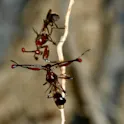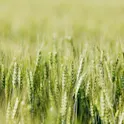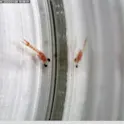Oceanic life found to be thriving thanks to Saharan dust blown from thousands of kilometers away
Scientists from the US measured the relative amounts of ‘bioreactive’ iron in four sediment cores from the bottom of the Atlantic. They showed for the first time that the further dust is blown from the Sahara, the more iron in it becomes bioreactive through chemical processes in the atmosphere. These results have important implications for our understanding of the growth-promoting effect of iron on oceanic phytoplankton, terrestrial ecosystems, and carbon cycling, including under global change.














